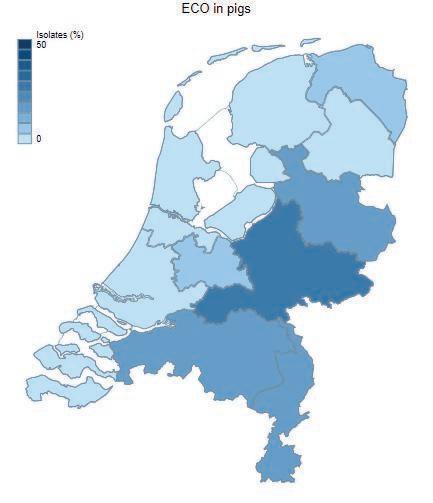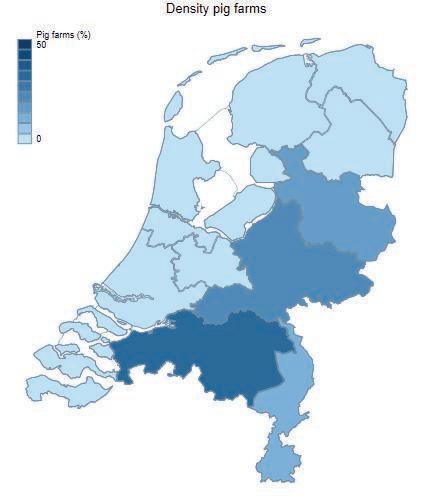
1 minute read
ANIMAL HEALTH
from Antimicrobial sensitivity of Dutch porcine A. pleuropneumoniae, E. coli and S. suis 2016 - 2020
by Royal GD
Access to representative, reliable antimicrobial susceptibility testing (AST) data is a prerequisite for further promotion of prudent use of antimicrobials and provision of solid evidence for policies aimed at reducing antimicrobial resistance levels in bacterial pathogens. Therefore, this study aimed to assess the effect of several potential factors on representativeness and reliability of AST results of Actinobacillus pleuropneumoniae (APP), Escherichia coli (ECO), and Streptococcus suis (SSU) from pigs.
Materials & Methods
AST results (Minimal Inhibitory Concentration (MIC)) were extracted from the Laboratory Information Management System of GD for the period 2016-2020. Next, additional data (age category, farm and province of origin) were collected and merged with the MIC databases. Subsequently statistical analyses were carried out using STATA 15.1 (StataCorp, 2017).
Results
• Overall, the number of APP (n=761), ECO (n=1141) and SSU (n=2816) isolates were well representative considering the number of pigs and number of farms per province they originated from. Although less APP isolates were available compared to ECO and SSU, for all bacterial species fairly precise estimations of resistance levels were determined as shown by the confidence intervals in the MIC distributions (<17% but most <9%).





• The dataset also allows for detection of year-to-year trends in resistance; hardly any significant changes in resistance percentages in time were found.
• Multilevel analyses revealed significant associations between resistance levels and age category (ECO and SSU); generally, resistance levels decreased with increasing age.
• For several antimicrobials a significant association between farm of origin and level of resistance was shown.
Conclusions
All factors associated with susceptibility levels should be considered before sharing aggregated susceptibility patterns for use in antimicrobial treatment guidelines and in veterinary practice.
This project was funded by The Netherlands Organisation for Health Research and Development (ZonMw); Dossier number: 541003007.
Table 2a - 2c

